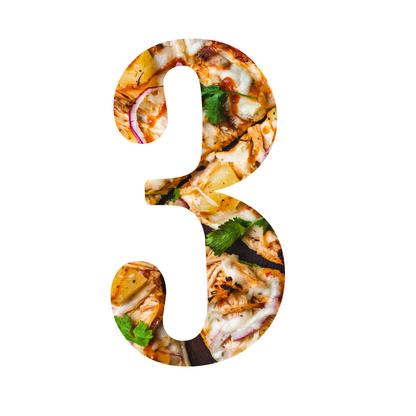
11 things we now know about ARFID
Lisa Dinkler gives us a summary of what we currently know about the eating disturbance ARFID.
The new kid on the block – what is ARFID?
Have you ever heard about ARFID? ARFID (the abbreviation of avoidant restrictive food intake disorder) describes an eating disturbance, where a person either eats a very low amount of food (and therefore doesn’t get enough calories), or an extremely limited range of food (and therefore doesn’t get enough macro- and micronutrients). Many people with ARFID restrict the amount as well as the range of food eaten. ARFID was officially recognized as a feeding and eating disorder diagnosis in the Fifth version of the Diagnostic and Statistical Manual of Mental Disorders (DSM-5) that was published in 2013 (it is also included into ICD-11 published in 2022). Almost ten years later, most health care providers might have heard of the term ARFID, but what exactly this diagnosis entails is still unclear for many.


ARFID is a new term but not a new condition
Although this type of disordered eating has been around for many years, it was not until 2013 that it was given the official diagnostic title of ARFID. Before that, other terms and diagnoses have been used to describe it, including eating disorder not otherwise specified (EDNOS), feeding disorder, picky eating, anxiety disorder not otherwise specified. In the absence of a better alternative, some people with an ARFID-like eating disturbance might have been diagnosed with anorexia nervosa, even though they were not restricting their food intake because they wanted to be thin or were afraid of gaining weight.

Why do people with ARFID avoid or restrict food?
People with ARFID avoid or restrict food for reasons other than weight and shape concerns. Most often these reasons are (1) a lack of interest in eating and low appetite, (2) a fear of negative consequences of eating such as choking, vomiting, allergic reactions, or stomach pain, and (3) a strong dislike of certain sensory characteristics of food such as smell, texture, taste, appearance, and temperature resulting in disgust towards these foods.

Consequences of the food avoidance/restriction
Importantly, ARFID should only be diagnosed if the food avoidance/restriction leads to serious physical consequences including weight loss or failure to gain weight, nutritional deficiencies, and dependency on nutritional supplements or enteral feeding. It is also considered a serious consequence if the food avoidance/restriction leads to considerable psychosocial impairment, for instance in the form of social isolation, teasing, and not being able to go to school or work.

ARFID vs. picky eating
Many health care providers find it difficult to differentiate ARFID from picky or selective eating, which is quite common—many people are to some degree picky with food. Here it is important to know that ARFID differs from picky eating in both severity and consequences of the food avoidance. As described above, people with ARFID suffer severe physical and psychosocial problems resulting from their eating disturbance, which is not case for picky eaters. Furthermore, ARFID includes more than just food selectivity, for example, some people with ARFID are not picky at all about what they eat, but they just cannot eat enough food, because they already feel full after the first bites.

Many people with ARFID are not underweight
It is also important to be aware that low weight is not required to diagnose ARFID, as the person can have one or more of the other physical or psychosocial consequences. For example, imagine Robert, a boy who prefers to only eat foods on the white-beige-brown color spectrum. The few foods he accepts include fries, potatoes, rice, crackers, chips, pasta, and ice-cream. He loves these foods and eats a lot of them. Robert therefore gets enough (probably even too many) calories, but suffers from vitamin and protein deficiency, as he doesn’t eat any vegetables, fruit, or meat. The weight of people with ARFID varies across the whole spectrum, and a potential ARFID diagnosis should not be excluded just because someone is overweight.

People of any age can have ARFID
Another important feature of ARFID is that it can be diagnosed at any age. Although ARFID most often seems to start in childhood, adults do have ARFID as well, in fact, it is likely that they have had ARFID or ARFID-like eating problems since childhood.

How common is ARFID?
The prevalence of ARFID in the general population is still somewhat uncertain but is likely somewhere between 1% and 5% in children and adults. This implies that today in Sweden circa 100 000–500 000 individuals are affected by ARFID (but none of them are officially diagnosed since ICD-11 has not yet been implemented in Sweden). To determine the prevalence of a condition in the general population, validated screening tools and large samples are needed. In the absence of parent-reported screening tools for ARFID in children, we have developed such a tool and used it to document ARFID prevalence in 4-7-year-old Japanese children. 1.3% of the children screened positive for ARFID, 45% of these were boys.1 We are currently using the same screener in an ongoing study where we screened circa 700 2.5- and 4-year-old children coming to the routine check-ups at 20 child health centers (BVCs) in the Fyrbodal region north of Gothenburg. Children screening positive for ARFID were interviewed with a clinical interview for ARFID to confirm diagnosis. We want to find out how accurate this new screener is in identifying preschool children with ARFID and how common ARFID is in this age group.

ARFID at the intersection of eating, anxiety, and neurodevelopmental disorders
Although defined as a feeding and eating disorder, ARFID has many similarities to neurodevelopmental disorders (NDDs), such as the early onset, the stability throughout life, and the high heritability. In a recent (not yet published) twin study, we found that ARFID has a very high heritability (ca. 80%), which is comparable to the heritability of autism and ADHD. ARFID and NDDs also often co-occur. In the Japanese sample we found that children with early neurodevelopmental problems—especially problems with communication and language, social interaction, attention, concentration, and sleep—were more likely to screen positive for ARFID between age 4-7.2 In another study where we examined ARFID in children from a low-resource, multiethnic area who were diagnosed with autism before the age of 6, we found that 28% of these children had ARFID, and many more had feeding problems that didn’t meet criteria in ARFID (only 24% had no feeding problems at all).3 However, ARFID is also closely associated with anxiety disorders. For example, the fear-based presentation of ARFID could also be considered as a specific phobia (of food). Furthermore, comorbidity with anxiety disorders in people with ARFID is very high: about 35-72% have diagnosed anxiety disorders; most common are generalized anxiety disorder and social anxiety.

ARFID is an umbrella diagnosis
As you have probably noticed by now, ARFID is a very heterogeneous diagnosis, complicating the identification of ARFID causes and treatment. More than the previously established eating disorder diagnoses (e.g., anorexia nervosa, bulimia nervosa), ARFID is an umbrella term that encompasses a wide range of symptom profiles and severities. It affects people of any age, sex, and weight. Its onset can be either acute (more likely for those with fear of e.g. choking) or the eating problems can be longstanding (more common for low interest presentation and sensory-based avoidance). In addition, the food restriction is based on three separate but very often co-occurring motivations, and somatic comorbidity is high (e.g., acid reflux, constipation, food allergies, cardiopulmonary problems). When assessing ARFID, it is therefore important to identify somatic conditions that could contribute to the eating difficulty or even explain symptoms such as weight loss (in the latter case ARFID would not be diagnosed). ARFID is therefore also a diagnosis of exclusion. That is, if a person severely restricts their eating and this leads to serious physical and/or psychosocial consequences, this person would only be diagnosed with ARFID if the food restriction cannot be explained by fear of weight gain/drive for thinness or underlying somatic conditions.

Improved care for ARFID is urgently needed
It is a big problem that people with ARFID and their families currently receive very limited support from the healthcare system. Unfortunately, treatment for ARFID has not yet been systematically integrated into Swedish health care and there are no national treatment guidelines yet. People with ARFID often rotate among medical specialties (e.g., gastroenterology, psychiatry, pediatrics) with unclear diagnosis and treatment plans. And even with a diagnosis, it is difficult to access treatment for ARFID. Although it seems natural that specialized eating disorder units should be one of the main providers for ARFID care, many of these units in Sweden are not (yet) commissioned to treat patients with ARFID. This situation is stressful for patients and their families. Even though evidence-based treatments for ARFID are still being developed and evaluated, we know enough about ARFID to start implementing care for this patient group more broadly, for example, using Cognitive Behavioral Therapy and Family-Based Treatment for ARFID (see recommended books). ARFID research is urgently needed, but so is the implementation of the knowledge we have gained so patients and their families can benefit from it!

Book for parents
ARFID Avoidant restrictive food intake disorder: A guide for parents and carers by Rachel Bryant-Waugh
Self-help book for adults
The picky eaters recovery book by Jennifer J Thomas, Kamryn T. Eddy, and Kendra R. Becker
For clinicians and researchers
Cognitive-Behavioral Therapy for Avoidant/Restrictive Food Intake Disorder by Jennifer J. Thomas & Kamryn T. Eddy
Avoidant restrictive food intake disorder in childhood and adolescence. A clinical guide. Edited by Rachel Bryant-Waugh and Claire Higgins
Family-based treatment for avoidant/restrictive food intake disorder by James D. Lock

Helpful overview of ARFID assessment tools (not open access)